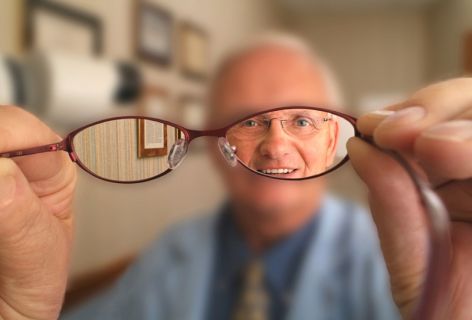As you age, it is normal to experience a decline in physical strength and energy levels, and you have to eat more healthy food. Typically, the human body starts becoming weaker, which also affects your eyes as an age-related decline in performance. Where some individuals may begin experiencing eye-related issues in their 40s, others may feel their vision impairing upon reaching their late 50s. Read on to learn more on how your vision changes with age.
Aging Affects Eye Structures
Vitreous Detachment
With aging, the gel-like vitreous inside the eyes begins pulling away from the retina due to liquefying. This causes “floaters and spots” to appear in your vision. Some people may even experience flashes of light. This condition is as a sign of “vitreous detachment”. You can treat this with eye drops but it isn’t harmless. If you spend the better part of your day in front of a screen, the condition can cause problems for you. Flashes of light and floaters may also signal the beginning of retinal detachment. Therefore, visit a doctor immediately to figure out the cause.
Loss of Peripheral Vision
This is a normal symptom of age-related eye problems. The size of your visual field decreases by approximately one to three degrees per decade of life. As a result, you may experience a peripheral visual field loss of almost 30 degrees by the time you touch your late 60s, or 70s. This eventually requires you to use multifocal eyeglasses, reading glasses, or multifocal contact lenses. You have to be extra cautious while driving, as loss of visual field increases the risk of automobile accidents.
Decreased Color Vision
As you age, there might be a decline in sensitivity of the cells in the retina, which are responsible for inducing normal color vision. This might make it difficult for you to focus on colors, as the contrast between different colors may become less noticeable. Some colors may even appear less bright than other colors. In particular, blue colors usually appear “washed out” or “faded”. There is no treatment for this loss of color perception. However, there are certain exercises that might help you maintain fine color discrimination.
Smaller Pupil Size
The muscles responsible for controlling pupil reaction and size to light may weaken as you age. This makes the pupil less responsive and smaller to changes in ambient lighting. This the main reason why most people in their late 50s need three times more lighting to read comfortably, as compare to younger people. Seniors are more likely to suffer from irritating glare when going out in light, or be dazzled by bright sunlight. This is why seniors should wear sunglasses or eyeglasses with anti-reflective coating and photochromic lenses.
As you can see, your eyesight will deteriorate with age, unless you manage to keep your eye health strong. Therefore, it is important to look after your eyes and schedule timely checkups to ensure you can enjoy perfect vision well into your twilight years.




